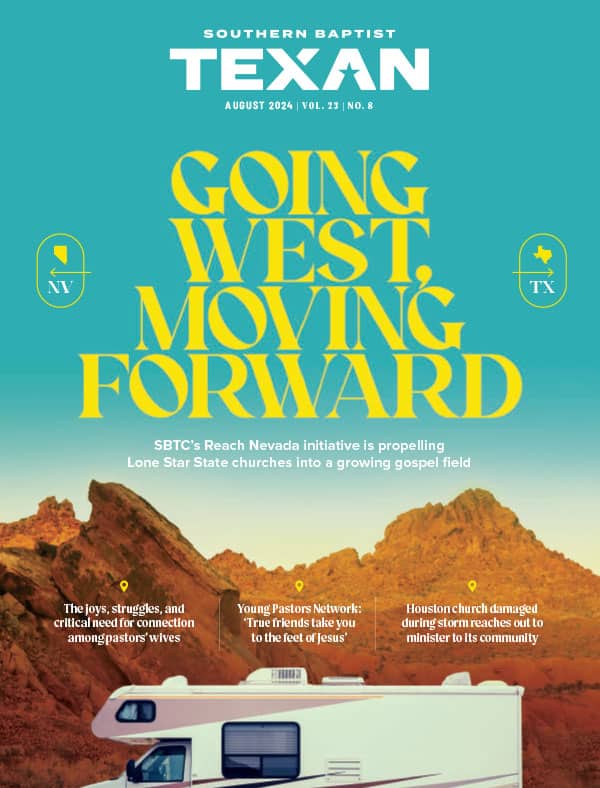The lead church planting coordinator for Southern Baptists spent several days with his staff at the North American Mission Board developing a definition of a church. In the end, he found the best definition in the language of the SBC’s faith statement.
“Where we define a church you could almost look at the Baptist Faith and Message,” stated Richard Harris, vice president for church planting at NAMB. “That’s not said lightly. It’s going to tell you basically the definition of a church and how it functions.” (See page 8 for BF&M Article Six on The Church.)
In a practical sense, Harris said a church is recognized by the functions it performs. “If a group of people meet to minister, that’s not a church. If they just have a Bible study, that’s not a church. If they meet to disciple a few folks along the way, that’s not a church. But if they meet to do what we believe are the functions of missions and evangelism, worship, fellowship and discipleship?and we think stewardship is a crucial element, then these folks are meeting for the purpose of the church. Then it doesn’t matter if there are five, 50 or 500 people. If they’re fulfilling those functions then it’s a church.”
Southern Baptists of Texas Convention Missions Director, Robby Partain, credits Rick Warren of Saddleback Church in Lake Forest, Calif., with giving clarity on the definition of a church through his emphasis on the five purposes.
“A New Testament church is a group of followers of Jesus who have covenanted together for the purposes of worship, fellowship, discipleship, ministry in the church and mission in the world,” he quoted. “Whether they use these terms or not, I want to see SBTC church planters incorporating these five purposes into the strategy for their plants,” Partain said, drawing on his experience as a church planter in the Northwest.
For a group to be a new church plant supported by the SBTC, they must go beyond simply being a New Testament church, Partain added. “They must be a New Testament church that desires to be a cooperating and contributing Southern Baptist church through affiliation with the SBTC. They must also be accountable to a sponsor church until such time as they are ready to stand on their own financially and governmentally.” That process may happen very quickly or it may take a few years, he added.
“The current model of church planting recognizes that we are starting new churches that, although accountable to a sponsor for a period of time, are biblical churches from the start. We want to see them reach self-sufficiency and governmental autonomy as quickly as possible.” That approach represents a shift from an earlier era in Southern Baptist life when a mission begun by a sponsoring church remained an appendage indefinitely. “We want to plant churches with an intentional strategy of moving rapidly toward self-sufficiency and autonomy,” Partain said.
One hurdle SBTC church planters try to avoid involves the polity of the new church. “I encourage planters to have a clear idea of what polity they want from the beginning and develop that structure early on, but to be slow about formalizing that polity.” Partain sees the period of accountability to the sponsoring church as a time to develop the leadership infrastructure before polity is firm.
Harris has found that many church planters launch a congregation too quickly. “They are so anxious to have a presence and prominence in the community that they don’t do the groundwork.” He cited several successful church plants that devoted nine months to establishing a vision for ministry. Rushing the constitution of a church should also be avoided, he said. On the other hand, some sponsoring churches keep new congregations as missions in order to feed their own numbers, he said.
Ed Stetzer, director of NAMB’s Nehemiah Project church planting effort, has planted churches in New York and Pennsylvania and trained church planters across the United States and on five continents. In his comprehensive book on church planting, “Planting New Churches in A Postmodern Age,” Stetzer wrote, “The typical church planter thinks a great deal about the new church’s first service?envisioning the crowd and great attendance, rehearsing preaching, and ‘pre-living’ the church’s first service of worship. Most planters, on the other hand, have not considered the nature of the congregation’s underlying governance or structure.”
Stetzer learned that lesson the hard way. During his first effort at planting a church, members reorganized repeatedly, responding to the priority of the last conference he attended or an influential book. “I was unsure of what approach to governance was best,” he added, admitting ignorance as to the Bible’s counsel concerning church structure. “About this time in my life, I decided to attend seminary!” he noted.
“Just as changing worship styles can divide churches, changing church structure and leadership styles can divide a congregation and sap morale.” Like Partain and Harris, Stetzer believes more time should be given to such issues before launching the congregation or introducing a constitution. He also warns against planting a church to demonstrate an ecclesiological principle, calling that a sure path to failure.
Some planters downplay the importance of biblical church structures, viewing them as “theological afterthoughts” or “traps to be avoided for the sake of encouraging a streamlined organization,” he wrote.














